A guide of what to do in Philadelphia including historic sites and the best places to eat.
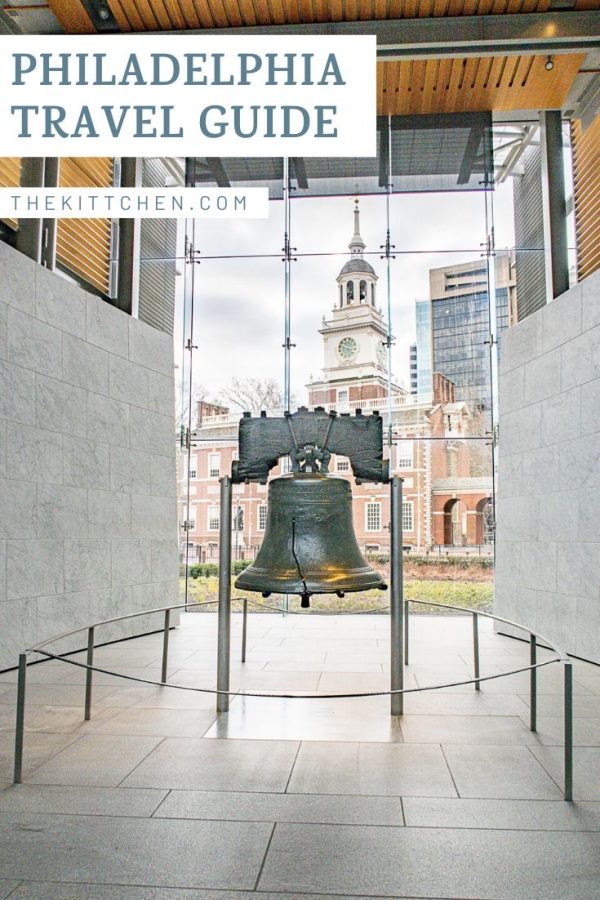
Philadelphia. This city was the first capital of the United States of America as well as the location where the Declaration of Independence and the Constitution were signed. It is one of the best places to immerse yourself in our nation’s history.
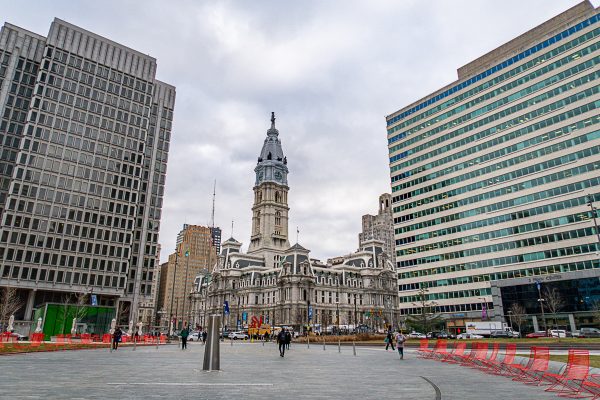
When to Visit Philadelphia
Philadelphia is a very popular destination for school trips, and the historic sites and museums can be very crowded. I was told that starting in March, the Betsy Ross House sees 1,000 visitors a day – and it is small. I visited in January, which is part of the offseason that extends into February. I didn’t encounter any lines or crowds – sometimes I was the only person at a museum or site! The weather might not be the best in winter, but I loved feeling like I had the city to myself.
Getting to Philadelphia
Did you know that it takes as little as 75 minutes on the train to get from Philadelphia to New York City? Philadelphia is an easy add-on to a New York City trip.
If you are flying, the Philadelphia International Airport is a hub for some airlines making it an easy destination to reach by plane. Plus, there is a train that runs from the airport to downtown Philly. The train leaves every 30 minutes and will get you to downtown in just about 30 minutes. It’s so easy.
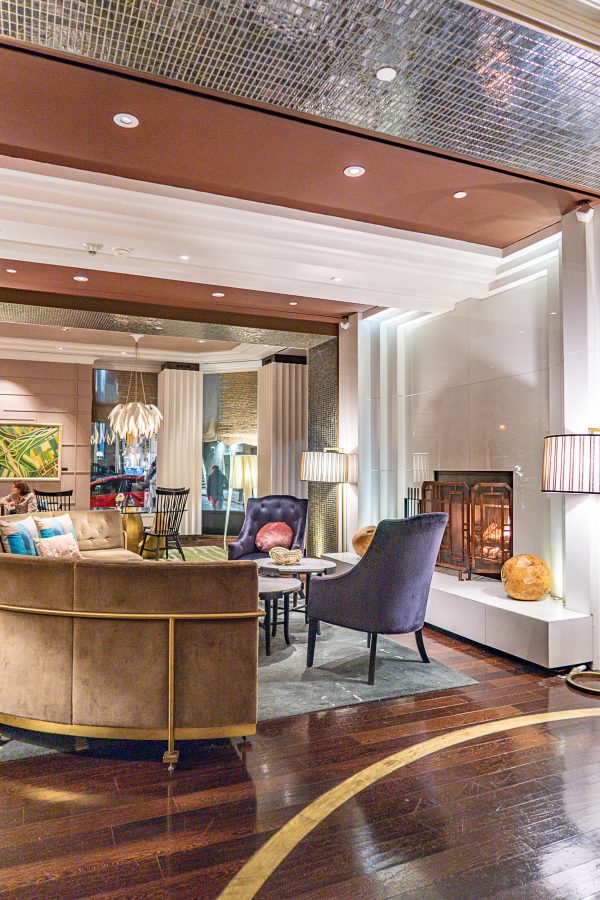
Where to Stay
I stayed at the Kimpton Palomar Hotel. It was well located, affordable, and they host a complimentary happy hour in the lobby each night. From here I was able to take the train from the airport and walk to all the major sites.
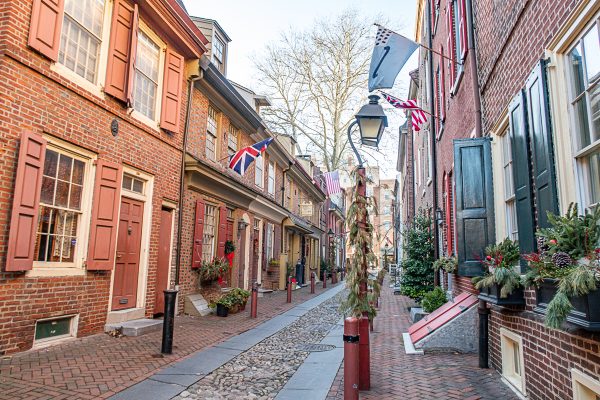
What to do in Philadelphia
Many of the sites listed below are in the Historic District and are within easy walking distance for each other. I walked from Love Park to Reading Terminal to The Dreams Garden to the Liberty Bell to City Hall to Carpenter Hall to the Museum of the American Revolution to Benjamin Franklin Court to Christ Church to Elfreth’s Alley to the Betsy Ross Museum. Yes, that sounds like a lot but it was very doable considering that I visited when there were no crowds. If you are visiting in peak season you should allow two days for these activities.
One of the best things about Philadelphia is that since many of these sites are run by the National Park Service, admission is free!
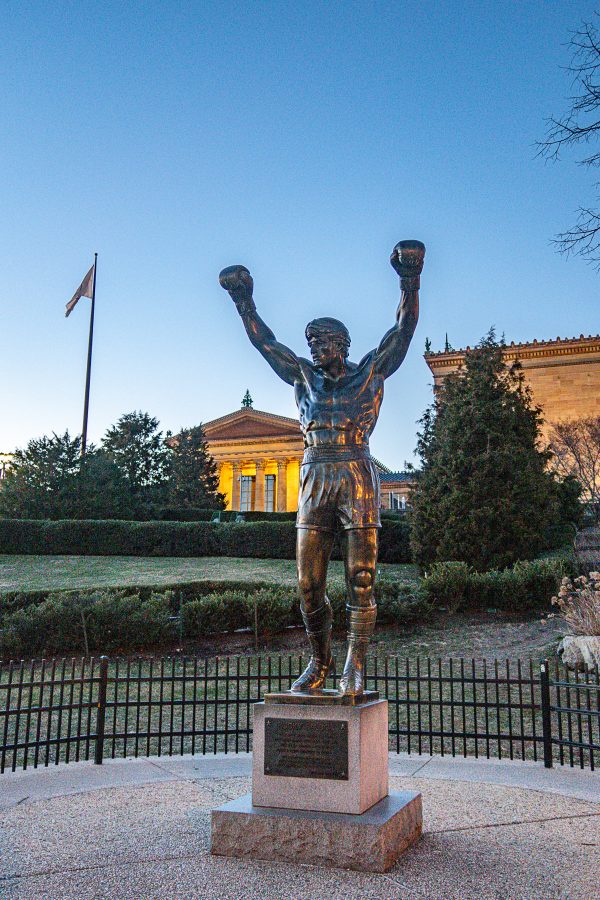
Visit the Rocky Statue and run up the Rocky Steps
The “Rocky Steps” are the steps to the Philadelphia Museum of Art and yes, it is a popular destination for runners. When looking at the steps, you will find the Rocky Statue to the right of the bottom of the steps. When I went to the steps as a kid there was a man with a boombox blasting the Rocky theme.
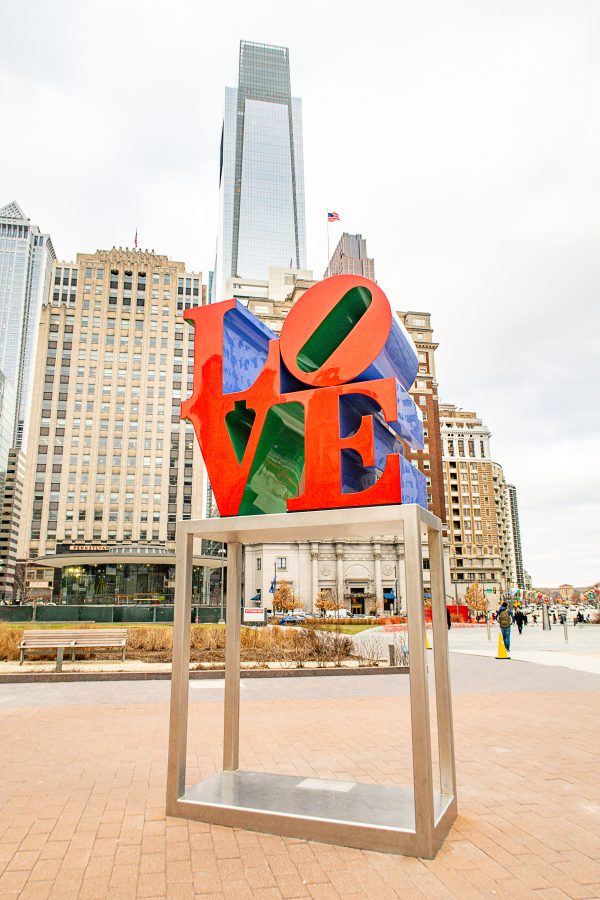
Love Park
This park in downtown Philadelphia is officially called John F. Kennedy Plaza, but it’s earned the nickname Love Park in honor of the Robert Indiana LOVE sculpture in the middle of the plaza. Between Thanksgiving and Christmas Eve there is a Christmas Village in the park.
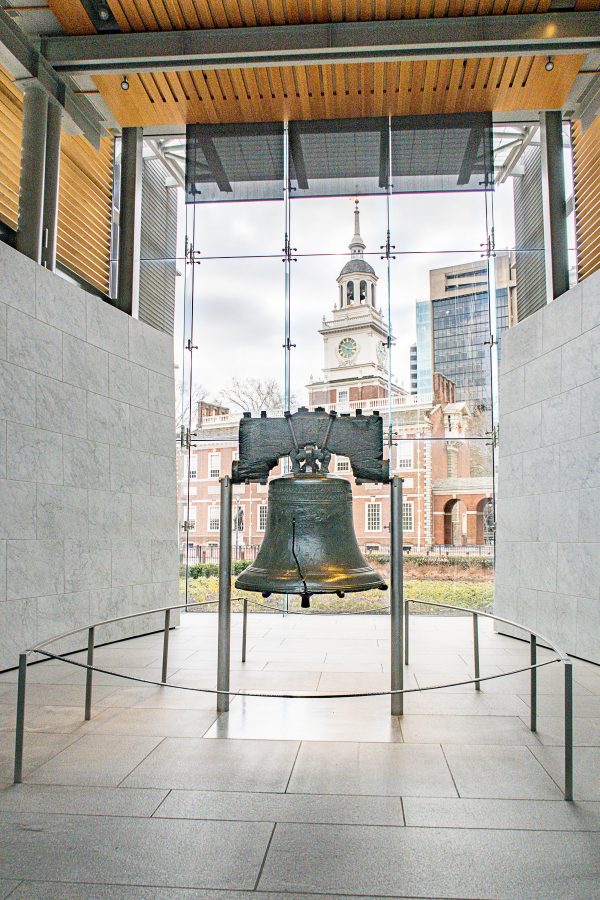
The Liberty Bell
One of the most iconic historic sites in Philadelphia, the Liberty Bell originally rang in the Pennsylvania State House. The bell would ring to signal meeting taking place with city lawmakers and to call the townspeople together to hear the reading of the news. It became a symbol of American independence and of the abolition movement.
Eventually the bell developed a crack and repair attempts were not effective. As a result, the bell no longer rings.
Today the bell resides in a pavilion called the Liberty Bell Center on Independence Mall, beside Independence Hall.
Admission is free, and the hours are 9 am – 5 pm daily. Some holidays have special hours.
Edgar Allan Poe Historic Site
Edgar Allan Poe spent six years of his life living in Philadelphia. His Philadelphia home, located at 532 N. 7th Street, is open only on Fridays, Saturdays, and Sundays from 9 am – 12 pm and 1 pm to 5 pm.
Admission is free.
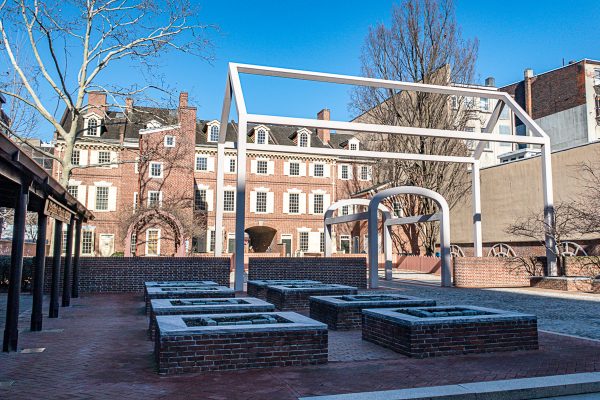
Franklin Court
This was the site of Benjamin Franklin’s brick home where he lived until he died in 1790. Sadly the home was torn down 22 years after his death. Today the outline of the home marks where it one stood. In addition to the site marking Franklin’s home, Franklin Court is also home to the Franklin Court Printing House and the Benjamin Franklin Museum.
This is outside, admission is free and you can go anytime.
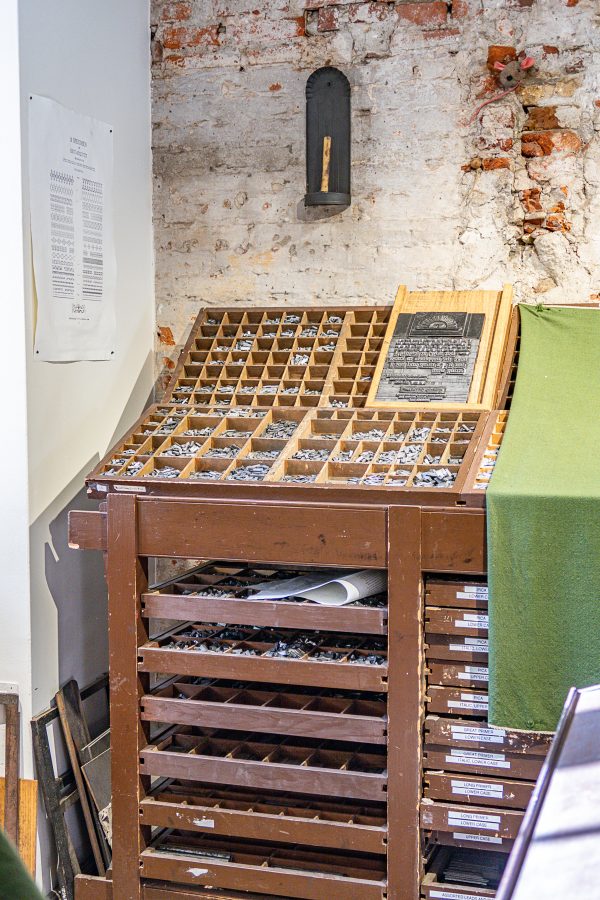
Franklin Court Printing Office
This small museum honor’s Benjamin Franklin’s newspaper which he printed to spread the news during the time of the American Revolution. The printing off is run by the National Park Service and the friendly park ranger showed me how the printing press was used and he gave me some tidbits of knowledge. Did you know that we call capital letters “uppercase” because they were kept above “lowercase” letters in the cases organizing letters for typesetting? Mind your ps and qs comes from the skill needed to set type backwards.
Admission is free and it is open daily from 10 am – 5 pm excluding holidays.
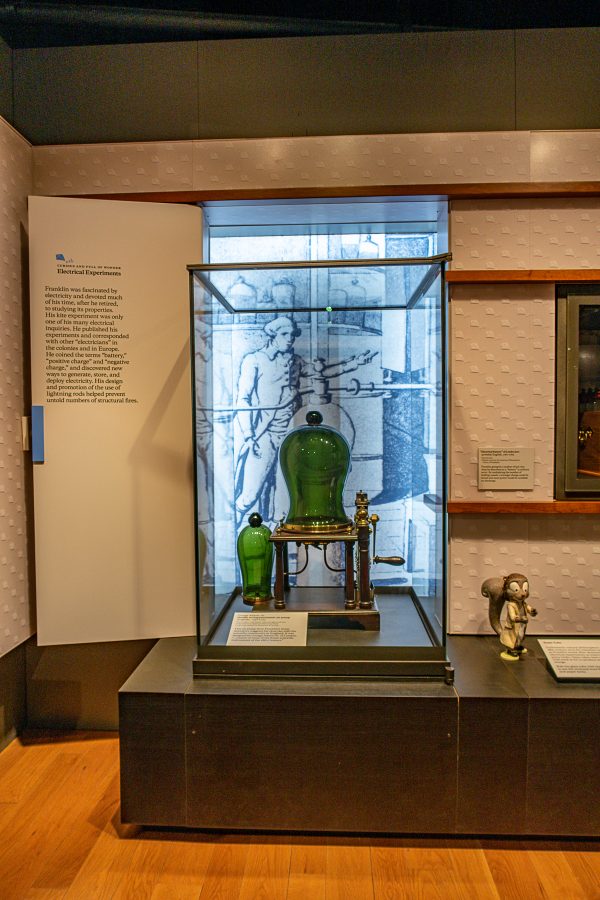
Benjamin Franklin Museum
This museum is filled with exhibits that explore Franklin’s life, character traits, and inventions. It is a very kid-friendly museum with interactive exhibits. I would say visiting the museum is a must for families but adult-only groups can skip it.
Admission is $5 for adults and $2 for children. The hours are 9 am to 5 pm everyday, with shortened hours on holidays.
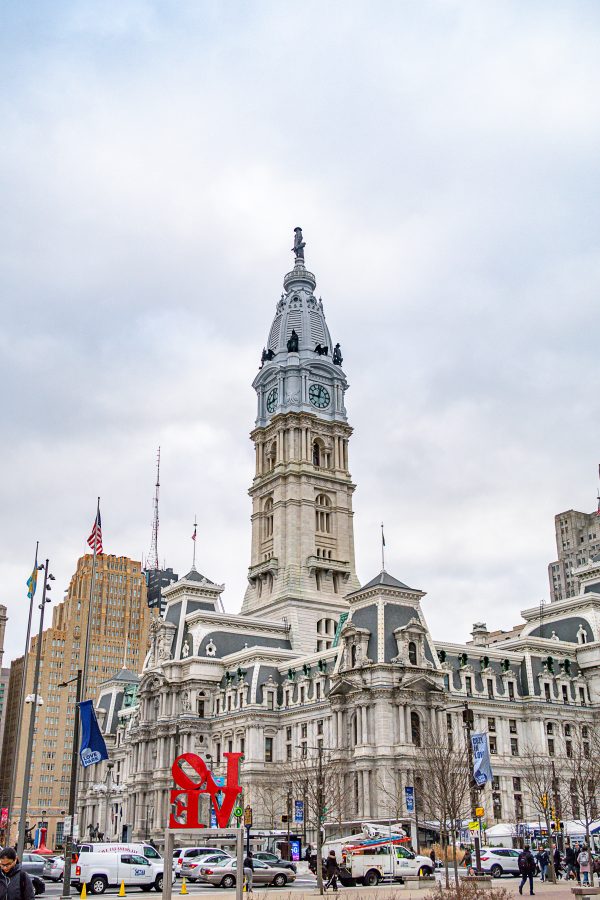
City Hall
Philadelphia City Hall is a stunning architectural landmark designed in the Second Empire style. It looks like it belongs in Paris, not Philly. It was constructed between 1871 and 1901 and it’s hard to miss since it’s right in the middle of the city. Joining a tour of the building grants visitors access to the lavish City Council Chamber, the Mayer’s Reception Room, the Conversation Hall, and the Supreme Court Room plus they can view the city from the open-air observation deck.
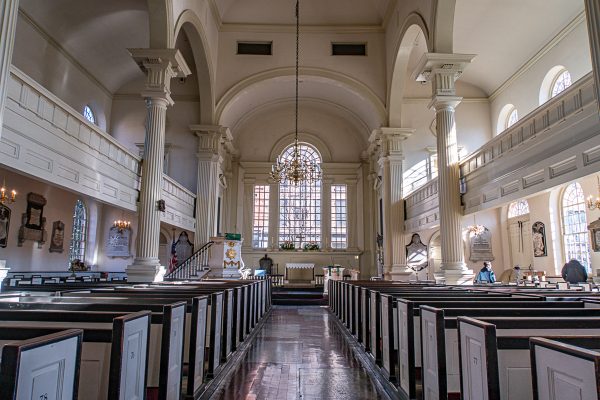
Christ Church
This church built in 1727 was the tallest building in the 13 colonies for over 50 years. It’s still an active church, and it was where George Washington and many other forefathers attended services. Pew 50 was Washington’s.
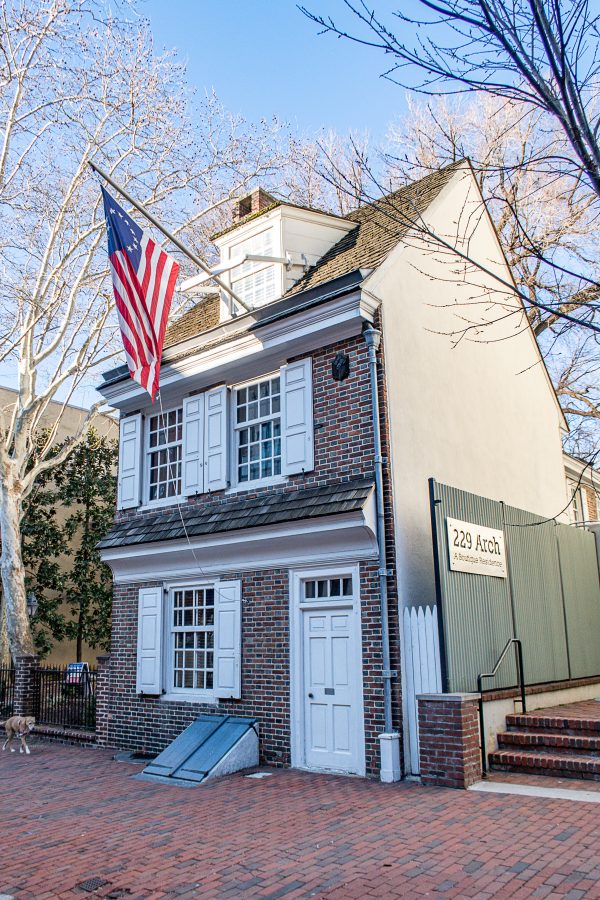
Betsy Ross House
Seamstress and flag-maker Betsy Ross rented rooms in this small house and it is where she lived and worked. Learn the story of Betsy Ross and how she came to create the flag for the 13 colonies.
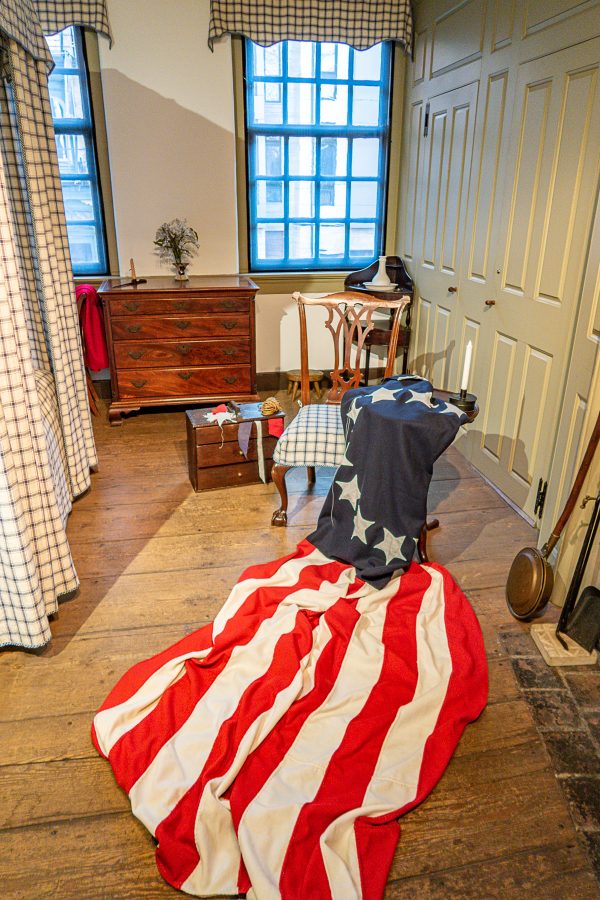
Self-guided tours are $5 for adults and $4 for children and students. Check the website for hours as they change seasonally.
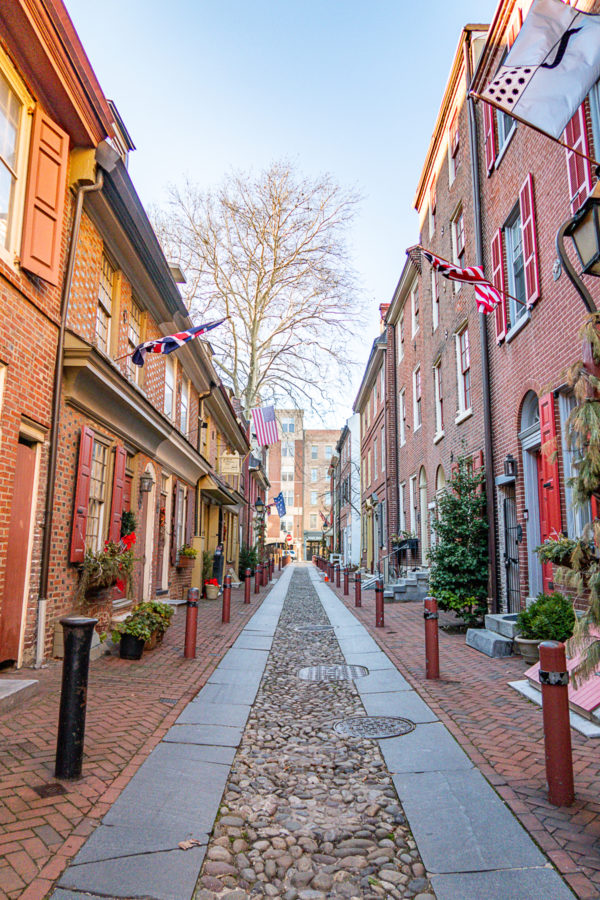
Elfreth’s Alley
This narrow street is America’s oldest residential street. The 32 homes on the street were constructed between 1728 and 1836, and most are still private residences. There is a small museum at #124-126. The street is very picturesque and definitely worth visiting, it is a short walk from the Betsy Ross House.
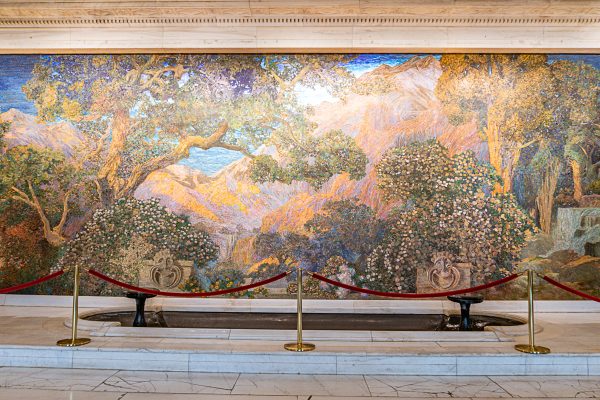
The Dream Garden
This Tiffany glass mural made by Mayfield Frederick Parrish is an easy (and free!) stop to make on the way to Independence Hall and the Liberty Bell. The mural measures 16 feet high by 50 feet wide and was made using a mix of clear, translucent, and opaque glass.
Admission is free and the hours are 7 am – 6pm Monday to Friday.
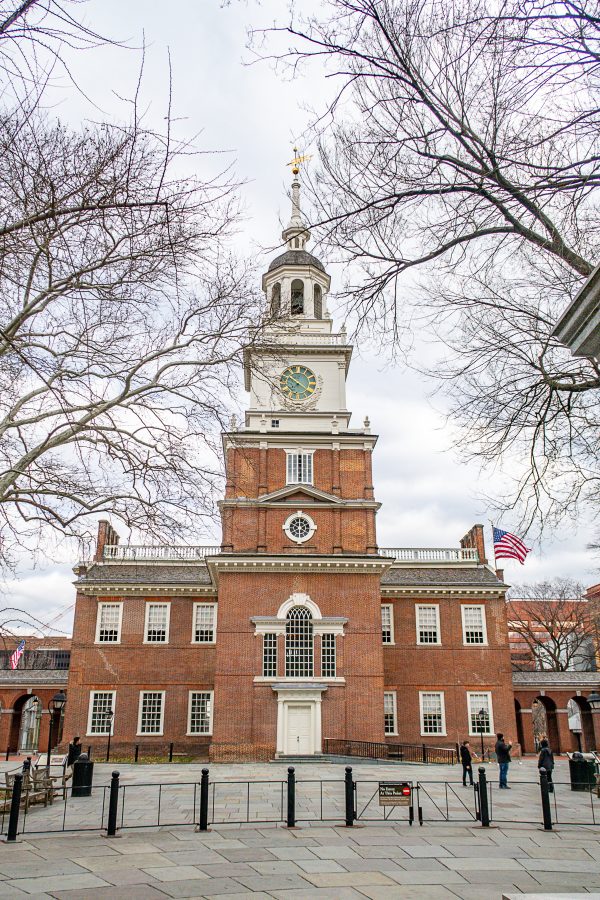
Independence Hall
Independence Hall was where both the Declaration of Independence and the U.S. Constitution were signed. This building was the principal meeting place for the Second Continental Congress from 1775 – 1783 (except for during the British occupation of Philadelphia in 1777).
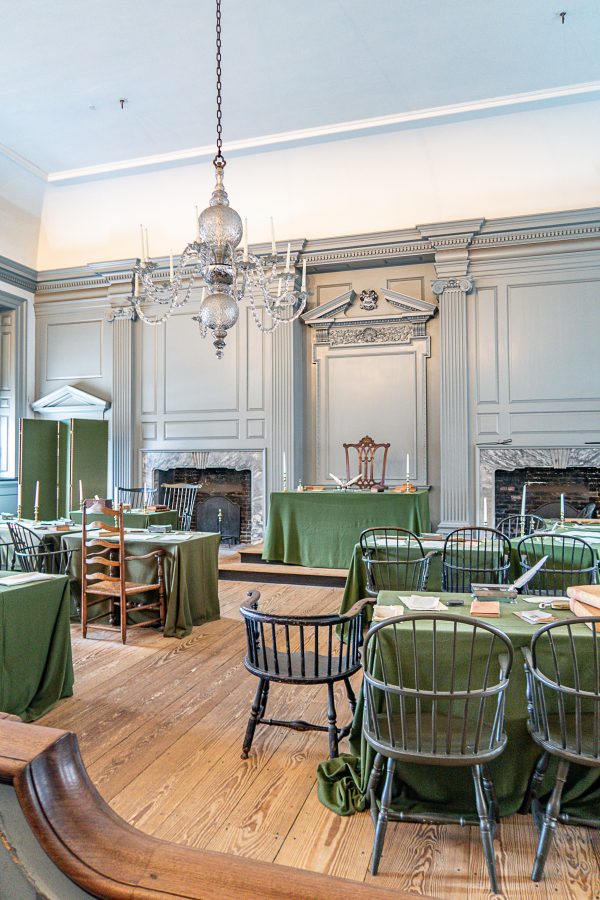
Admission is free and the hall is open daily from 9 am to 5 pm. Visitors must join a tour (free) to enter the hall – you can make advance reservations online.
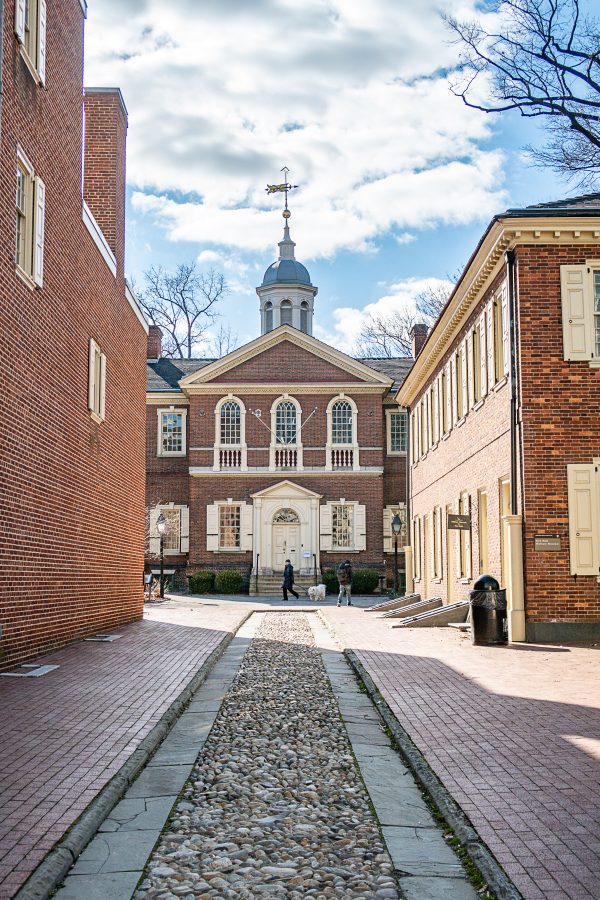
Carpenters’ Hall
This Georgian style building constructed in 1771 was owned by the Carpenters’ Company, a trade guild. The building is of historical significance because the First Continental Congress met here in 1774. Later, Benjamin Franklin held several meetings with French spy Julien Achard de Bonvoiloir here. These meetings were key to establishing an alliance with France during the American Revolution.
Admission is free and the hall is open Tuesdays-Sundays from 10 am to 4 pm. During January and February the hall is closed on Tuesdays.
Museums
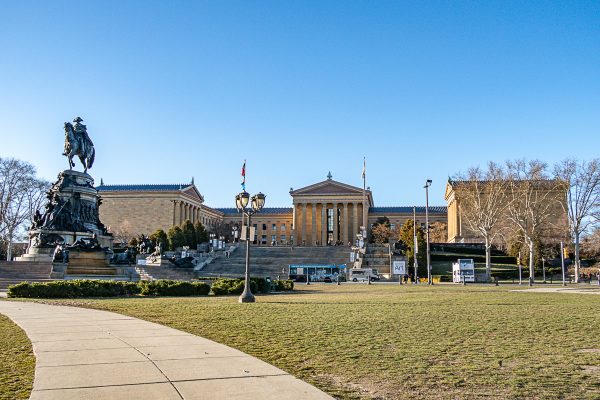
The Philadelphia Museum of Art
This massive museum is the ideal place to spend a rainy day. Masterpieces by Picasso, Duchamp, Dali, Renoir, Van Gogh, Monet, Manet, Warhol, Sargent, and Cezanne are all on display here. Plus you will find special exhibitions.
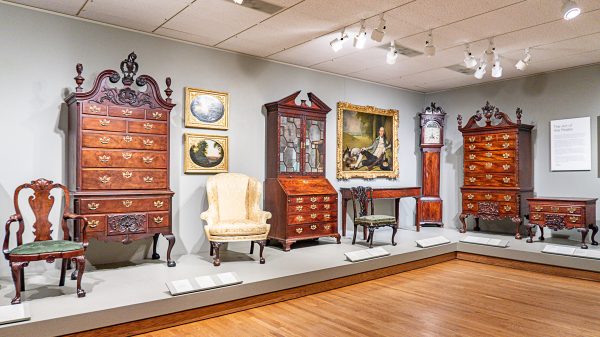
The collection of American Art which is inclusive of both fine art and decorative art is exceptional.
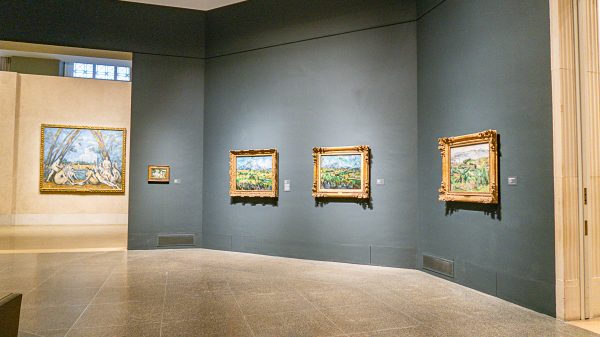
Admission is $14-$25 and the hours are 10 am – 5 pm daily, with hours extended until 8:45 pm on Wednesday and Friday.
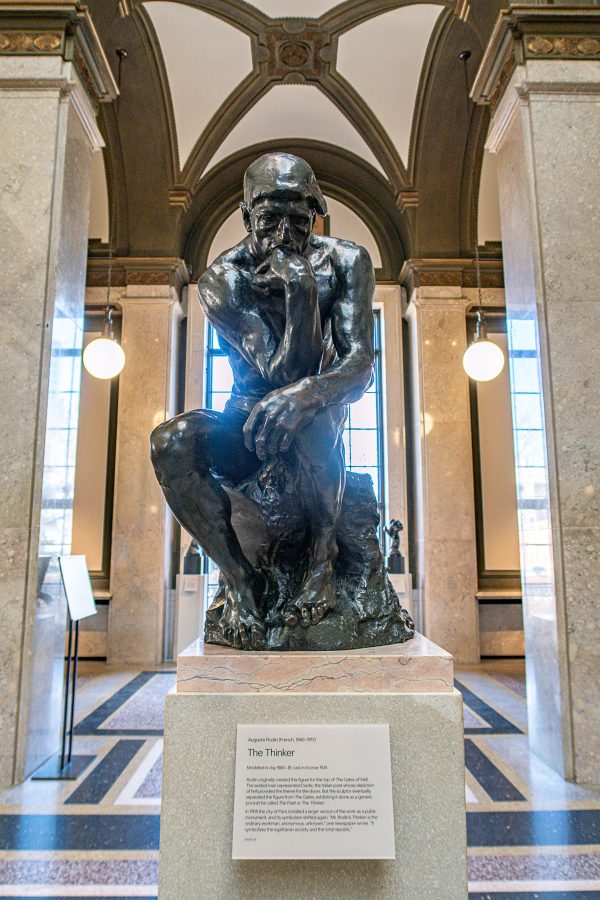
The Rodin Museum
This museum is just a short walk from the Philadelphia Museum of Art. The museum houses what was the private collection of works by Auguste Rodin that were acquired by Jules Mastbaum. It is the greatest collection of Rodin sculptures outside of Paris.
Discounted pricing is available if you visit both the Philadelphia Museum of Art and the Rodin Museum.
Admission is $7-$10 and the hours are 10 am – 5 pm Wednesday to Monday.
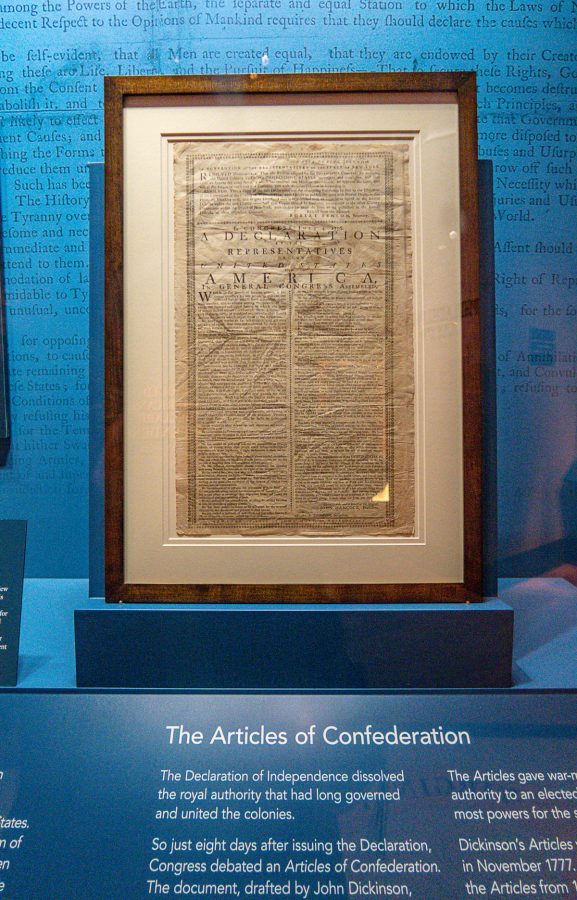
The Museum of the American Revolution
Learn about the American Revolution through a mix of permanent and ever-changing temporary exhibits at this museum. I liked how the museum puts the war in the context of what it meant for both sides, and the Native American tribe caught in the middle. One of the coolest exhibits is a small theater that puts you right in the middle of a battle.
Admission is $13-$21 and the museum is open daily from 10 am – 5pm.
Where to Eat in Philadelphia

Reading Terminal Market
Here are some restaurants that I tried and loved. I would love to hear more recommendations in the comments. Unfortunately due to severe morning sickness I was on a limited diet and couldn’t try foods like cheesesteak.
A large public market with food, produce, and grocery vendors. You can find everything from local specialties like cheesesteak and scrapple to global cuisine including Caribbean, Cajun, Italian, Thai, Greek, French and Chinese offerings.
The market is open daily from 8 am to 6 pm.

The Dutch Eating Place
Run by members of the Pennsylvania Dutch community, this diner within the Reading Terminal Market is hugely popular. I remember going here when I was a kid and feasting on giant pancakes – so I had to go back. This eatery has a long counter with full service, but you might have to wait for a spot. I got lucky and got a seat right away and was surrounded by burly construction works and cops who couldn’t even manage to finish the giant portions on their plates.
I ordered two pancakes which were both the size of a large plate. They were exceptionally thick and fluffy, yet one would have been plenty. This restaurant is also known for serving scrapple and apple dumplings.
The Dutch Eating Place is closed on Sunday and Monday. The businesses owned by members of the Pennsylvania Dutch community are closed these days while other businesses in Reading Terminal Market are open.
Olympia Gyro
Also located within the Reading Terminal Market, this is the spot for affordable Greek food. I had an excellent falafel here and they also serve up gyros.

Parc
A James Beard Award Winning restaurant serving classic French cuisine that has an elegant atmosphere that still feels approachable and not uptight or stuffy. In warmer months outdoor seating overlooks Rittenhouse Square. I dined here for both lunch and dinner. At lunchtime try the omelette which is light, creamy, fluffy perfection. At night try the steak or mussels frites. I would say that this is a must-visit restaurant.

Guiseppe & Sons
An Italian restaurant with a bar on the ground level and a dining room in the basement. The menu is a bit more modern and the food is fresh and uncomplicated. Think artichoke hearts cooked in lemon juice and white wine finish with a sprinkle of breadcrumbs or tortelloni with aged balsamic. I loved it. It’s a bit more formal than Little Nonna’s and it is larger so they could accommodate larger groups more easily. The ground level bar has a popular happy hour with small plates of food available from 5-7.

Little Nonna’s
A low key spot that makes red sauce Italian just like grandma used to make. Fresh pastas, garlic bread, and Sunday gravy are some of the more popular menu items. I loved the classic cacio e pepe. It is a small space, to get a reservation or go early and sit at the bar overlooking the small kitchen.
Mamoun’s
An offshoot of the popular NYC restaurant, this spot known for falafel’s and hummus is an affordable place to stop when visiting sites in the historic district.
Let me know if you have any more suggestions in the comments!
